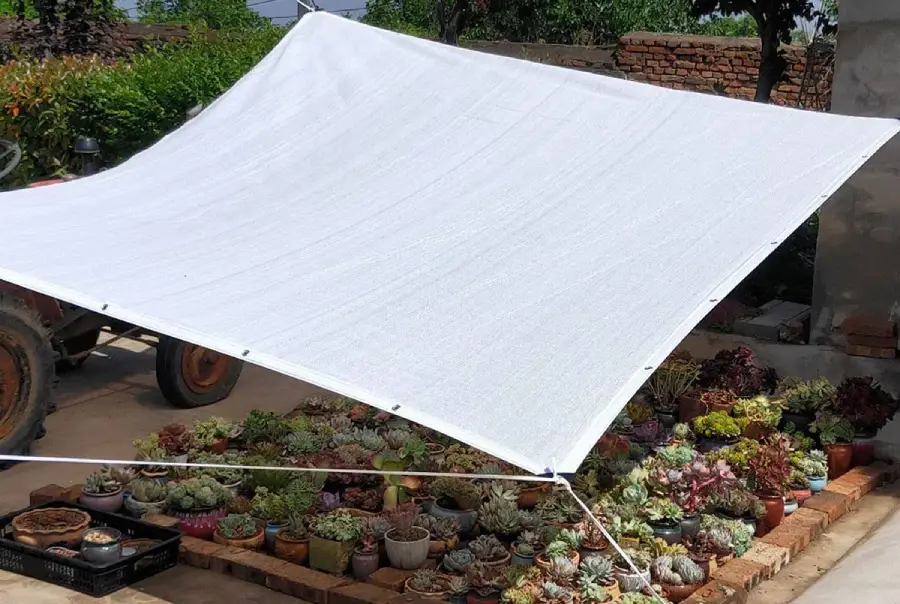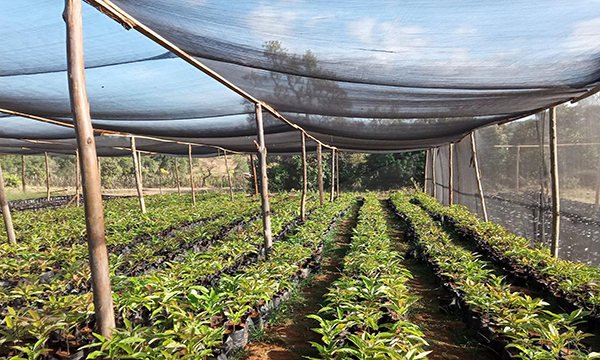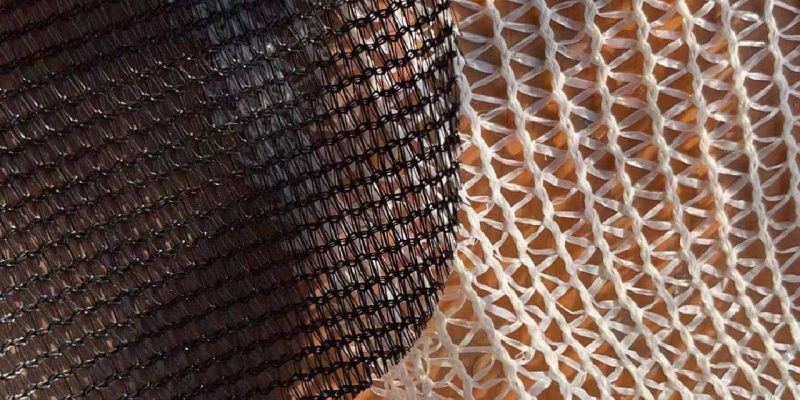Shade cloth is a practical and flexible option for protecting your plants from the sun’s damaging rays. However, with so many different colors and types of shade cloth available, it can be challenging to determine which one is best for your needs.
As a leading manufacturer of shade cloth, we understand how its color can affect plant growth and the effectiveness of the sunshade. In this article, we will compare two of the most common options: white and black shade cloth, and assist you in selecting the best color of shade cloth for your plants.
The Pros and Cons of Using White Shade Cloth
White shade cloth is a popular choice for plant protection because it reflects sunlight and heat, helping keep plants cooler and promoting healthy growth. Its reflective properties can also help to reduce the temperature of the surrounding area, making it a practical choice for outdoor spaces such as patios, decks, and pet areas. White shade cloth is also highly visible, making it easy to see in certain situations.
One of the main benefits of white shade cloth for plant-growing environments is its ability to reflect the full spectrum of light, including the blue and red wavelengths that are important for plant growth. As a result, plants grown under white shade cloth may receive a more balanced and natural light spectrum, which can promote healthier growth.

white shade cloth benefits
White shade cloth is particularly well-suited for flowering plants, such as roses, daisies, and lilies, and can be used in greenhouses, outdoor gardens, and other plant-growing environments. It is also suitable for patio plants, such as ferns, bromeliads, and spider plants, and for deck plants, such as hibiscus, jasmine, and mandevilla.
However, there are also some potential drawbacks to using white shade cloth. For example, it may not provide as much warmth as black shade cloth, which can be a factor to consider in colder climates or for plants that require a warm environment. Additionally, white shade cloth may not be as effective at blocking light as black shade cloth, which can be a concern when a high level of shade is needed.
The Advantages & Disadvantages of Black Shade Cloth for Planting
Black shade cloth is another popular choice for plant protection. It is known for its ability to absorb sunlight and heat, making it effective at blocking light and creating a warm environment for plants. It is also durable and easy to clean. Black shade cloth is often used in greenhouses and other plant-growing environments, as well as at special events, to create a dark, intimate setting.

It is suitable for greenhouse plants, such as cucumbers, melons, and zucchini, as well as for plants grown in colder climates, such as basil, eggplant, and peppers. It is also suitable for special event plants, such as ferns, bromeliads, and spider plants, as well as for plants that thrive in warm environments, such as hibiscus, jasmine, and mandevilla.
But there are also some potential drawbacks to using black shade cloth. For example, it may not provide as much reflection as white shade cloth, which can be a factor to consider in situations where heat and light reflection are essential. Additionally, black shade cloth is less visible than white shade cloth in certain situations, which can be a concern in applications such as outdoor events or safety.
Comparison Table: White vs Black Shade Cloth
| Property | White Shade Cloth | Black Shade Cloth |
| Reflectivity | Reflects sunlight and heat | Absorbs sunlight and heat |
| Visibility | Highly visible | Less visible |
| Light blocking | Reflects a wide range of the light spectrum | Absorbs a wide range of the light spectrum |
| Effect on plant growth | Reflects a wide range of the light spectrum, including the blue and red wavelengths that are important for plant growth | Absorbs a wide range of the light spectrum, which may inhibit plant growth |
Conclusion
In conclusion, both white and black shade cloth have their own unique properties, uses, and benefits. White shade cloth is best suited for situations where reflection and visibility are essential, such as protecting flowering plants from intense sunlight or providing shade at outdoor events. On the other hand, black shade cloth is ideal for creating a warm environment for plants or for blocking out light for special events. Ultimately, the right choice for your needs will depend on your project’s specific requirements. Be sure to consider the specific needs and requirements of your plants, as well as the location and climate where they will be grown, to ensure you choose the best shade cloth for your plants.
